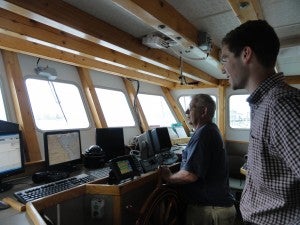By: Alex Koeberle and Jake Kritzer
Following the hottest summer ever on record, the Atlantic coast was rocked recently by super storm Sandy, both stark reminders that climate change is increasing the frequency and severity of extreme weather events. This year had already seen effects of climate change take on a more prominent place in marine conservation debates. In July, renowned Australian ecologist Dr. Roger Bradbury argued that the fate of coral reefs is essentially sealed due to warming waters, rising seas, acidification and extreme weather (although other prominent voices were quick to counter such doomsday predictions). Closer to home, an effort to restore Atlantic salmon to the Connecticut River was ended after nearly a half-century, in part because changing ocean currents, temperature regimes and plankton production might be impairing the ability of salmon to survive at sea and migrate back to spawn.
It is not only salmon that are contending with effects of climate change in New England. The region is seeing sea levels rising faster than many other places around the globe, which threatens to drown salt marshes already struggling with excessive nutrient loads. Marshes help buffer coastal areas against storm surge, and provide vital nursery and feeding grounds for many important fish species. Ocean waters are not only rising but warming as well, one consequence of which has been a dramatic shift in the distribution of cod north of the primary fishing grounds in the western Gulf of Maine. Also, rainfall patterns are becoming increasingly erratic, altering salinity profiles and plankton production, which hampers productivity of species throughout the food web. Read More










